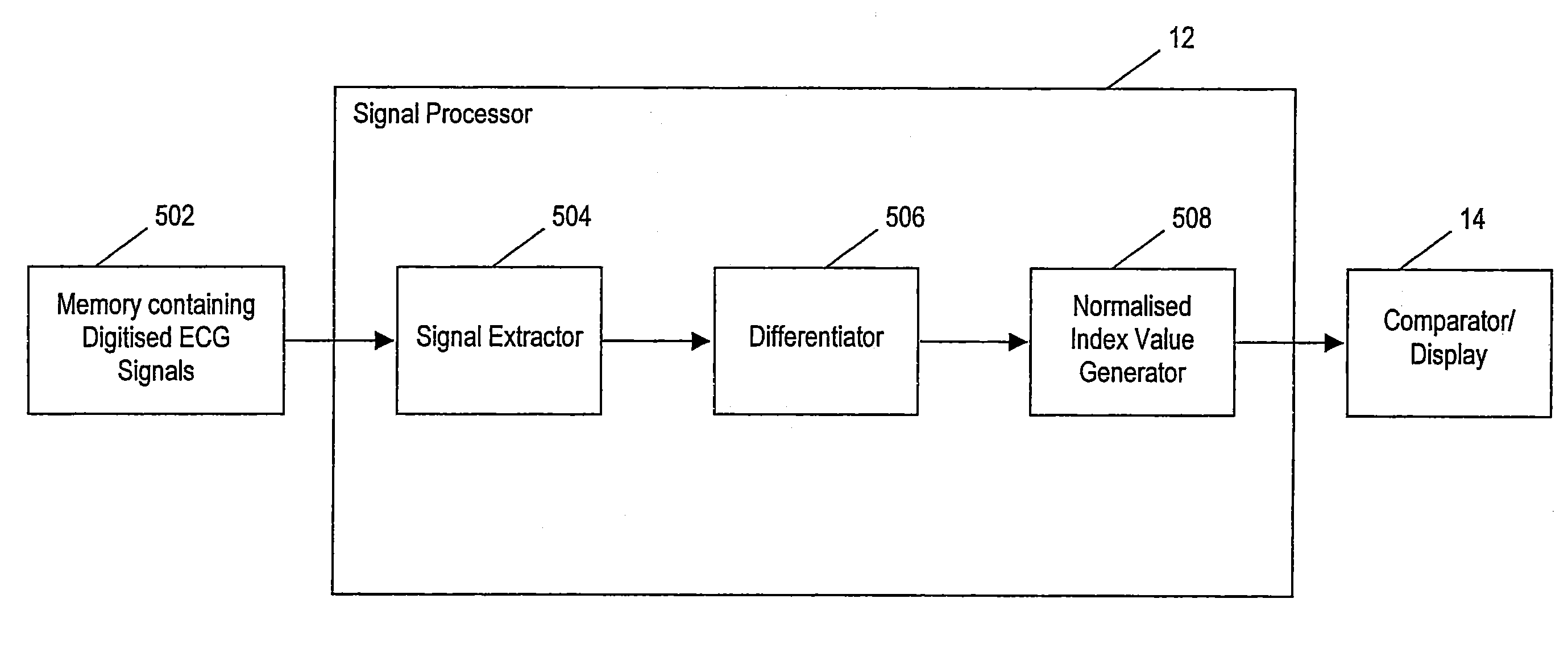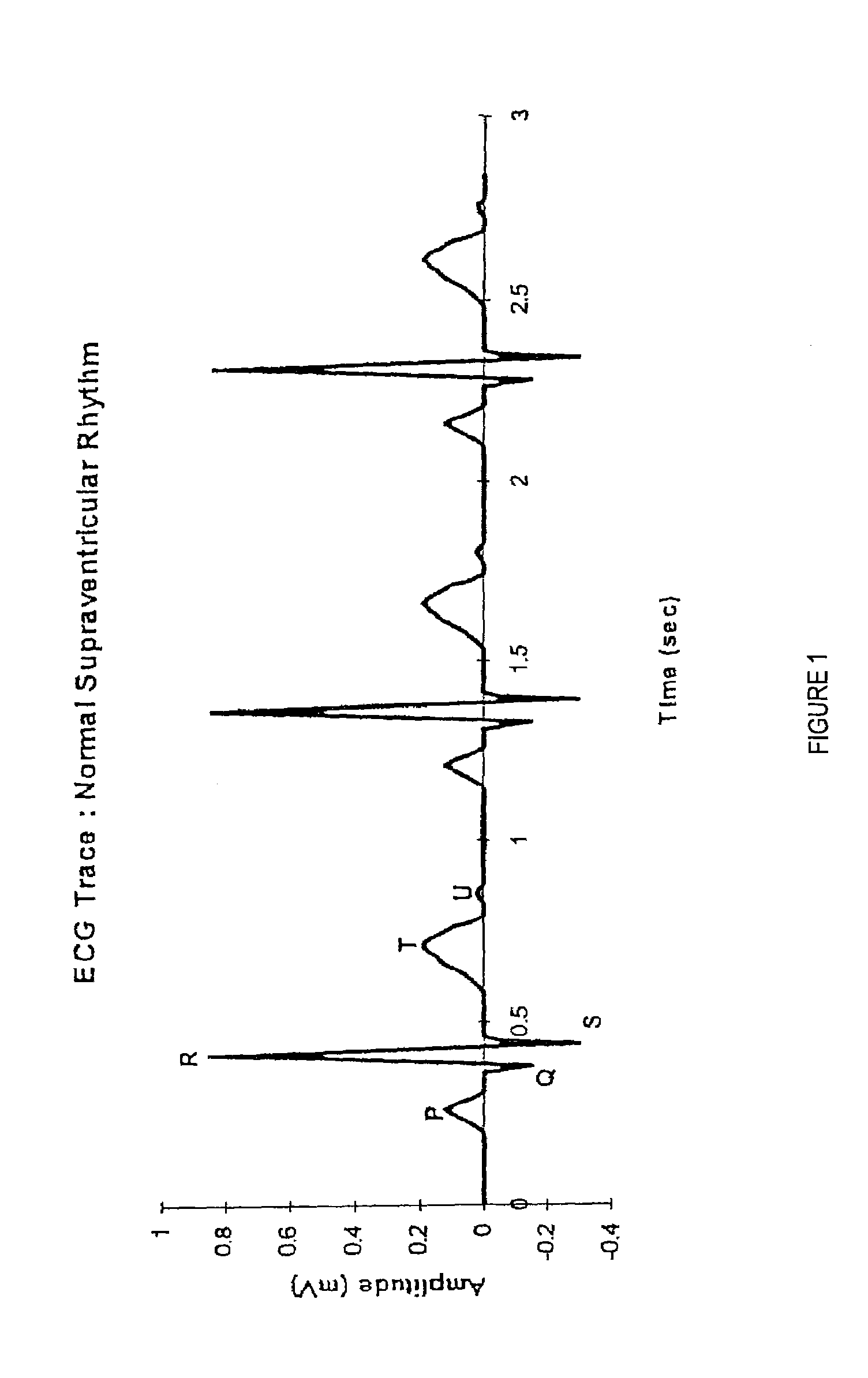Method and system for processing electrocardial signals
a technology of electrocardial signals and processing methods, applied in the field of electrocardial signal processing methods and systems, can solve the problems of increasing the risk of sudden cardiac death, inability to treat early, and increasing the chance of further complications, sometimes fatalities
- Summary
- Abstract
- Description
- Claims
- Application Information
AI Technical Summary
Benefits of technology
Problems solved by technology
Method used
Image
Examples
Embodiment Construction
[0108]Referring to FIG. 2, a computer system 10 for executing information processing according to embodiments of the invention is provided with a signal processor 12 and display module 14. The computer system 10 is adapted to receive ECG signals 20 from a patient 8 as noisy analogue signals. These analogue signals may be conditioned according to normal ECG signal conditioning techniques to place the signals 20 in a form which is suitable for digital sampling and are stored in the computer system at least temporarily but preferably in non-volatile memory. The ECG signals 20 are derived from one or more of up to twelve leads of the standard 12-lead ECG, and preferably include ECG signals from all twelve leads.
[0109]The signal processor 12 is configured to sample the ECG signals 20 at a rate of about 1000 Hz for digitisation thereof. The signal processor 12 then extracts the digitised samples corresponding to a selected complex and / or segment within the ECG signals 20 such as the QRS c...
PUM
 Login to View More
Login to View More Abstract
Description
Claims
Application Information
 Login to View More
Login to View More - R&D
- Intellectual Property
- Life Sciences
- Materials
- Tech Scout
- Unparalleled Data Quality
- Higher Quality Content
- 60% Fewer Hallucinations
Browse by: Latest US Patents, China's latest patents, Technical Efficacy Thesaurus, Application Domain, Technology Topic, Popular Technical Reports.
© 2025 PatSnap. All rights reserved.Legal|Privacy policy|Modern Slavery Act Transparency Statement|Sitemap|About US| Contact US: help@patsnap.com



